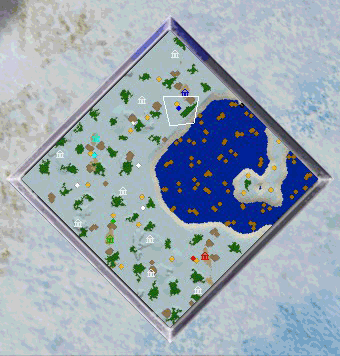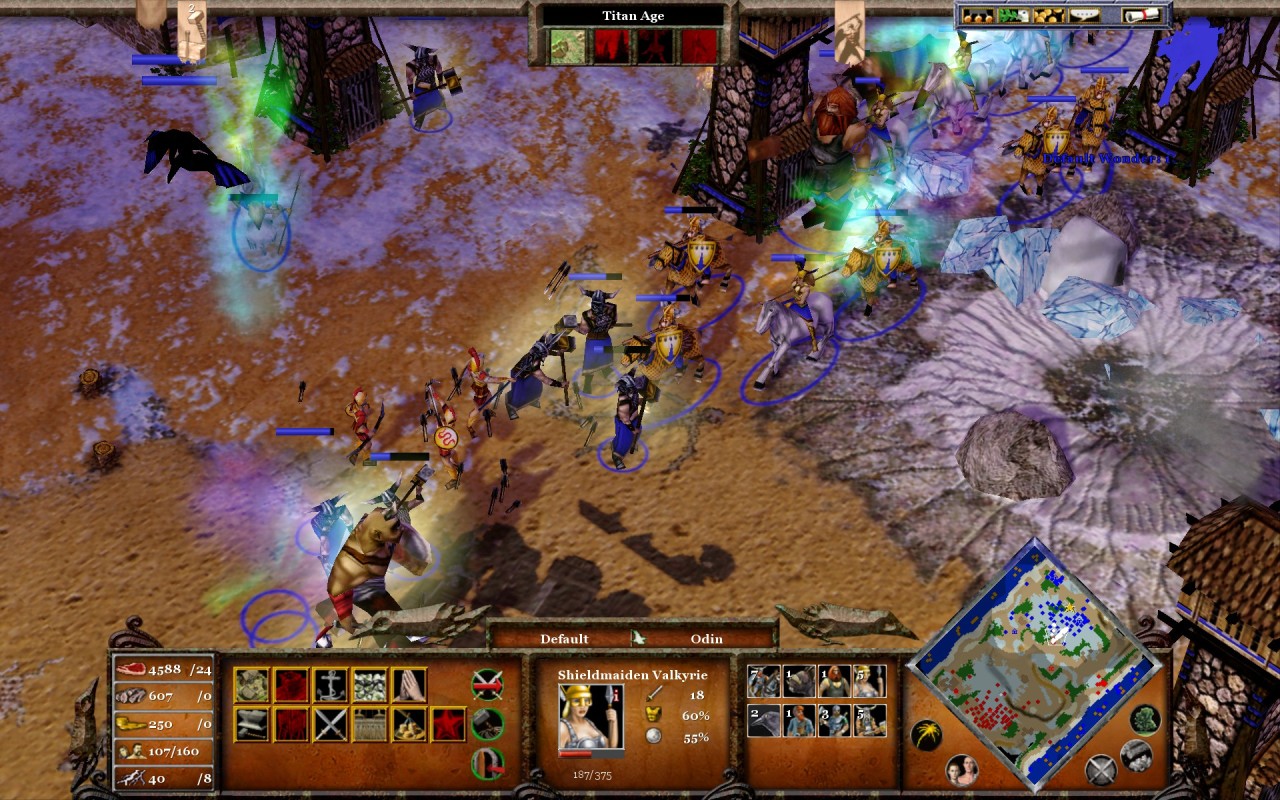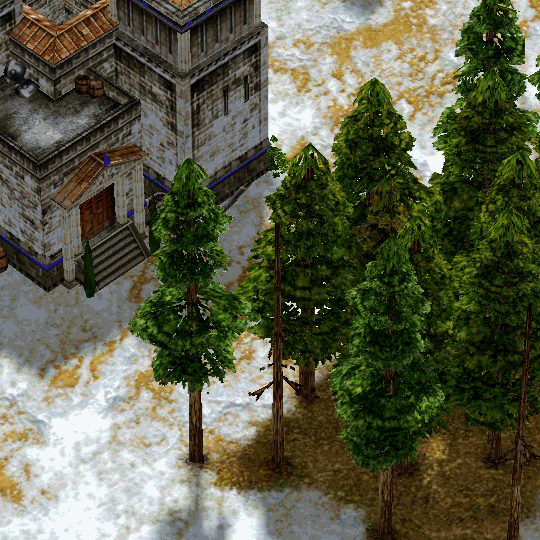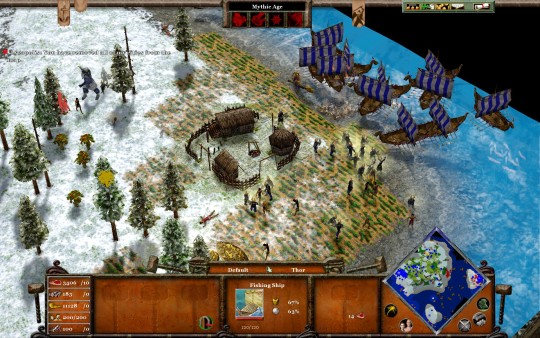


Age of Mythology
When Ensemble Studios made their next followup to Age of Kings, it was in a new engine with a mythical rather than historical setting. This let them revisit some of the aspects of both their previous games, setting-wise. More relevant for our purposes, the new engine meant a new approach to procedurally generating maps.
The Genie engine’s scripting was basically a set of rules for dropping in terrain features. Modders managed to do a lot with it, but it wasn’t really a full fledged language. Age of Mythology, on the other hand, introduced a new random map script for the BANG! engine that was a complete C-syntax Algol-like programming language, including variables and functions.

Age of Mythology has the now-standard suite of Ensemble random map scripts (including the Mediterranean one with a lake in the middle) and some new ones that change up the positioning and availability of resources. While none of the official maps were too crazy, there were random maps that changed the way the game plays, such as the migration and nomad maps, and maps that messed with the resource balance, such as the wood-poor Oasis. Prior Age of Empires games experimented too, but Age of Mythology did it with confidence.
Pushing the extremes is something that I feel isn’t always explored enough: making your procedural generators distinct from each other in ways that are visible to the player can go a long way in demonstrating just how much variability there is under the hood. Pushing an extreme like is is a form of order: an efficient cause that gives the player a window into how the hidden systems function.
